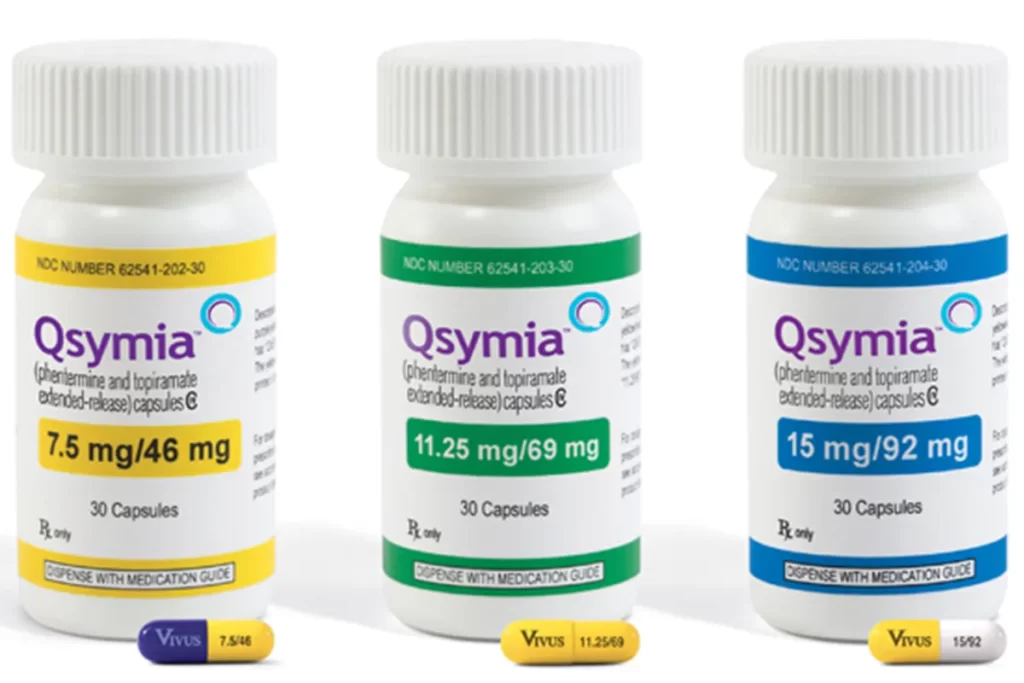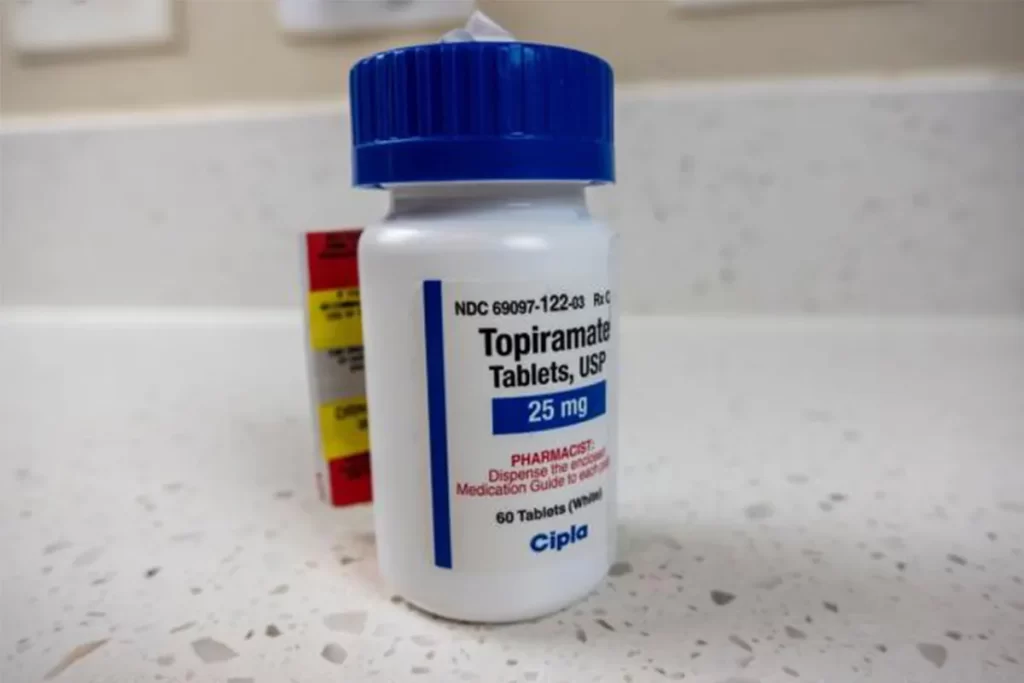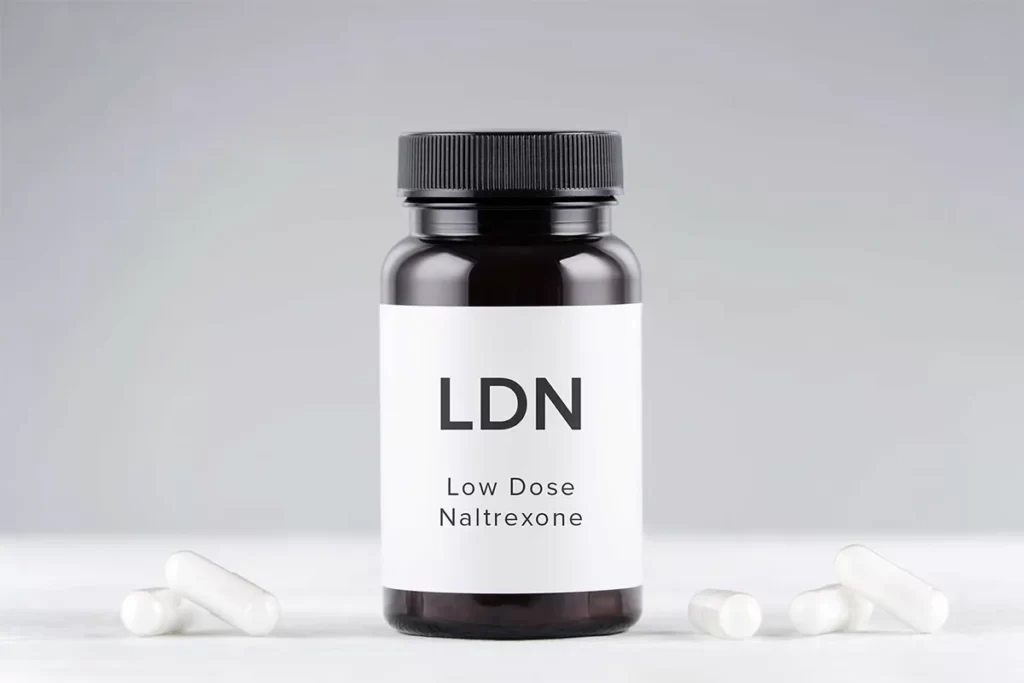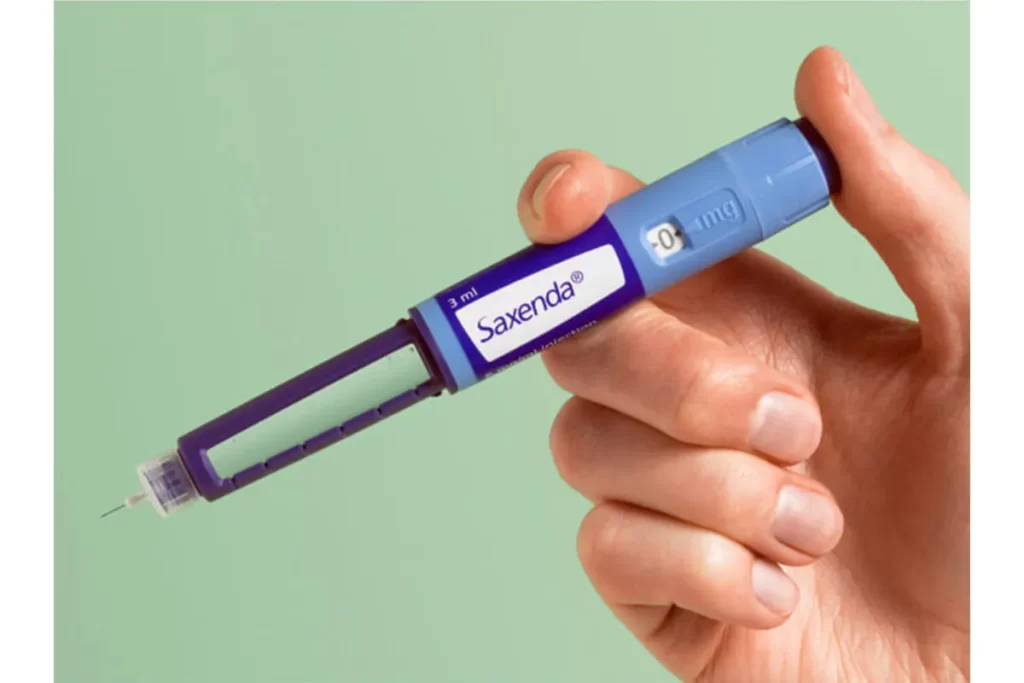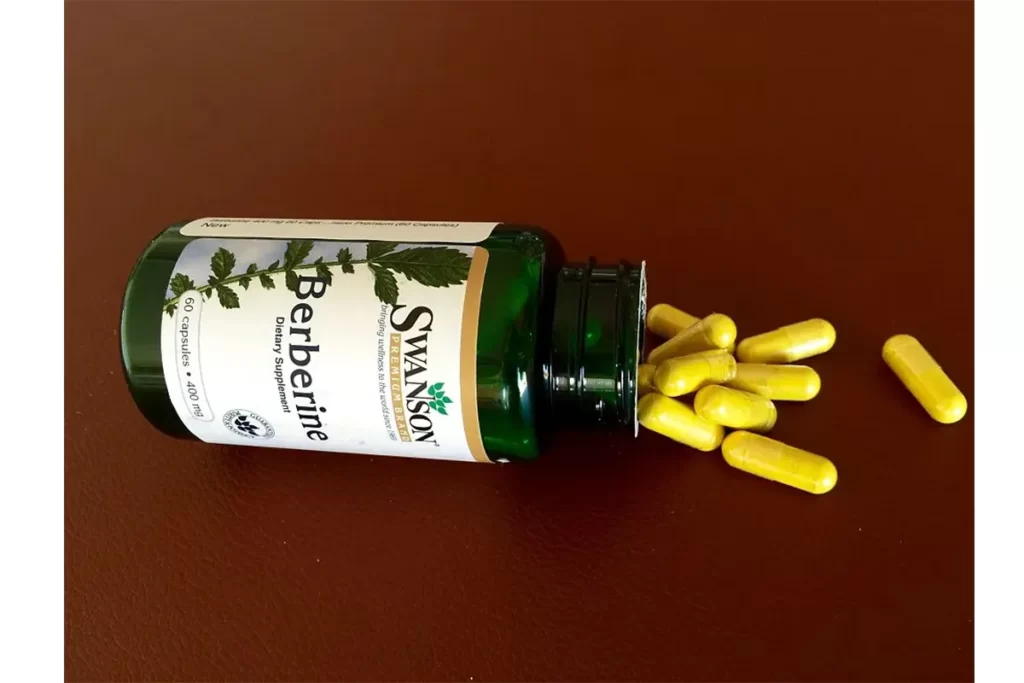Saxenda vs Trulicity for Weight Loss: Dosing, Side Effects, Weight Loss Efficacy
-
 Written by
Michael J. Ormsbee
Written by
Michael J. Ormsbee
- LAST UPDATED October 8, 2023
Saxenda and Trulicity are both glucagon-like peptide-1 (GLP-1) receptor agonists that are injected weekly for obesity treatment. However, there are key differences between Saxenda and Trulicity in their effects on weight loss. In this comprehensive guide, we compare and contrast the two medications’ mechanisms, dosing, weight loss results, side effects, considerations, and more. Understanding how Saxenda and Trulicity are similar while also appreciating their differences allows patients to make an informed decision with their healthcare provider about which treatment option may be preferable for their individual weight loss needs and health status when considering Saxenda vs Trulicity for weight loss.
Saxenda Introduction
Saxenda, also known by the generic name liraglutide, is a GLP-1 analog with 97% amino acid sequence identity to native GLP-1. Like GLP-1, Saxenda works by activating GLP-1 receptors, which increases insulin secretion and lowers blood sugar levels. By stimulating GLP-1 receptors, Saxenda also suppresses appetite and decreases food intake through delayed gastric emptying and increased satiety signals to the brain.
In December 2014, Saxenda injection gained FDA approval for chronic weight management in obese patients or overweight patients with at least one weight-related comorbidity. For weight loss, Saxenda is administered as a daily subcutaneous injection. The starting dosage is 0.6 mg injected once per day for one week. The dose is then increased by 0.6 mg each week up to a target maintenance dose of 3.0 mg, which is continued long-term. Saxenda must be used along with a reduced-calorie meal plan and increased physical activity for weight control.
In multiple clinical trials, treatment with Saxenda 3 mg resulted in significantly greater weight loss compared to placebo over 56 weeks. Patients taking Saxenda lost an average of 4.5% more of their initial body weight than those on placebo after 12 weeks of treatment. At 56 weeks, the difference in mean weight loss increased to 8% total body weight loss with Saxenda compared to 2.6% with placebo. The most common gastrointestinal side effects are nausea, vomiting, diarrhea, and constipation. Saxenda also has a boxed warning about increased risk of thyroid tumors.
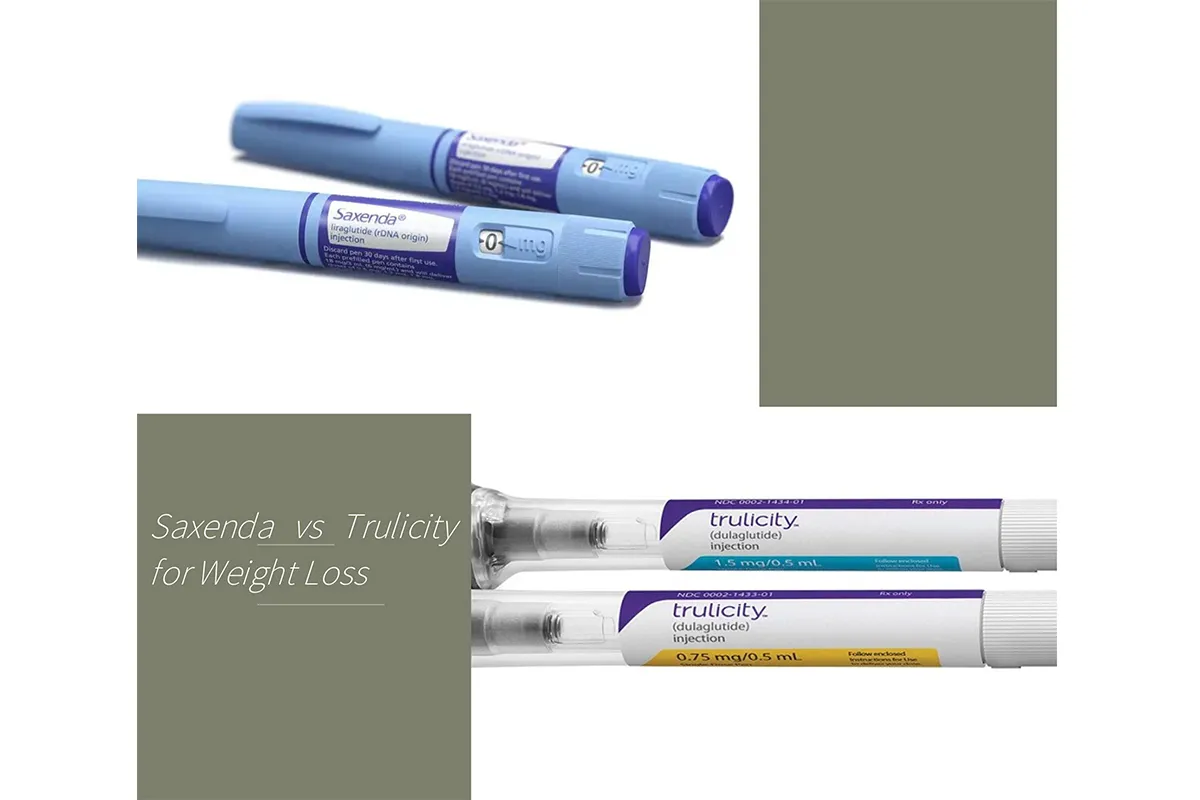
Trulicity Introduction
Trulicity, containing the active ingredient dulaglutide, is another GLP-1 receptor agonist that was FDA approved in 2014. Like Saxenda, Trulicity mimics the effects of endogenous GLP-1 and activates GLP-1 receptors to boost insulin secretion in a glucose-dependent manner. This improves glycemic control. Trulicity was specifically approved as an adjunct treatment for type 2 diabetes, not for weight management.
The recommended dosage of Trulicity for diabetes is 1.5 mg injected subcutaneously once weekly on the same day each week. The injection can be given in the abdomen, thigh, or upper arm region. For patients switching from another GLP-1 receptor agonist, the starting Trulicity dose depends on the prior medication dosage. Although Trulicity was not directly approved for weight loss, some studies found it resulted in modest reductions in body weight compared to placebo. However, its effects are smaller than Saxenda.
A 2019 meta-analysis found participants taking Trulicity had a placebo-subtracted weight reduction of about 2.2% total body weight after 26-56 weeks across 12 clinical trials. The amount of weight loss with Trulicity appears limited compared to other dedicated anti-obesity medications like Saxenda. Experts do not recommend using Trulicity off-label as a weight loss drug given its minimal effects on weight compared to available options specifically FDA approved for obesity.
When evaluating Saxenda vs Trulicity for weight loss, the data clearly shows that Saxenda generally produces greater weight reductions. In a 4-week clinical trial directly comparing Saxenda vs Trulicity weight loss, patients on Saxenda lost an average of 6% body weight compared to just 3.1% with Trulicity. While both drugs activate GLP-1 receptors, Saxenda is specifically engineered for optimizing appetite suppression and weight control at appropriate therapeutic doses. Trulicity is better suited for glycemic management in diabetes rather than intentional weight loss based on its pharmacological potency and clinical effects.
Similarities of Saxenda vs Trulicity for Weight Loss
Despite some distinctions in their indications, dosing, and effects, when comparing Saxenda vs Trulicity for weight loss, they do share various similarities stemming from their joint mechanism as GLP-1 receptor agonists. Both medications mimic endogenous GLP-1 and activate its receptors throughout the body to instigate several blood glucose-lowering effects, which include:
- Enhancing insulin secretion in a glucose-dependent manner from pancreatic beta cells, thus facilitating glucose uptake into cells.
- Relaying gastric emptying, which slows digestion and extends satiety post-meal.
- Suppressing appetite via GLP-1 receptors in the hypothalamus, which aids in reducing overeating.
- Preserving and potentially regenerating the function and mass of pancreatic beta cells.
In a discussion of Saxenda vs Trulicity for weight loss, it is important to note that both drugs require subcutaneous injection using a prefilled multi-dose pen device. Patients should inject the medication into their abdomen, thigh, or upper arm, with injection sites rotated each time to minimize irritation. Saxenda is taken daily, while Trulicity is administered once per week. Forgetting injections or skipping doses may impact the efficacy of both drugs.
Emphasizing lifestyle modifications are crucial when evaluating Saxenda vs Trulicity for weight loss. Both should be used along with a healthy diet and regular exercise for optimal outcomes. Neither replaces these lifestyle modifications but complements them instead. Following a nutritious, reduced-calorie meal plan and maintaining regular physical activity while using Saxenda or Trulicity can improve weight loss and diabetes control. The benefits of these GLP-1 drugs are limited if used without pairing with lifestyle adjustments.
In conclusion, while both Saxenda and Trulicity act via the GLP-1 receptor pathway, require injectable administration, and necessitate combination with dietary changes for full effects, Saxenda predominantly activates receptors that suppress appetite and enhance weight loss. This results in noteworthy differences between the two drugs in terms of the extent of weight loss that can be achieved, making it an important factor to consider in the Trulicity vs Saxenda for weight loss conversation.
Comparison of Weight Loss Effects of Saxenda vs Trulicity for Weight Loss
Clinical trials directly comparing Saxenda vs Trulicity for weight loss ve showcased significant body weight reductions with Saxenda. Analysis from a 4-week trial demonstrated a 6% body weight decrease with Saxenda in contrast to a 3.1% decrease with Trulicity. Furthermore, 56-week studies reveal noticeably higher weight loss with Saxenda.
Examining Saxenda vs Trulicity for weight loss in a 56-week trial revealed an average weight loss of 5.7% in patients taking Saxenda, compared to 2.3% for those on Trulicity. A separate 56-week randomized controlled trial involving obese patients with type 2 diabetes taking Saxenda or Trulicity showed a 9.2% weight loss in the Saxenda group, while Trulicity patients saw a 2.7% body weight reduction. These multiple studies, spanning 4 weeks to 1 year, confirm that Saxenda consistently produces two to three times more weight loss than Trulicity.

Understanding why Saxenda vs Trulicity weight loss falls in favor of Saxenda may lie in the pharmacology and dosing. Saxenda, with its 3 mg daily dose, is specifically set to optimize weight reduction and curb appetite. In contrast, Trulicity, with a lower 1.5 mg weekly dose, aims for glycemic control. The concentrations reached with Trulicity are arguably not high enough in key areas like the hypothalamus to impact the appetite enough for substantial weight loss. The higher dose administered with Saxenda thus results in higher activation of GLP-1 receptors involved in appetite regulation and control of food intake.
Some individual patient factors may also impact the Saxenda vs Trulicity for weight loss comparison. Those with a higher BMI, more insulin resistance, less endogenous GLP-1 activity, or certain genetic polymorphisms may experience more weight loss with Saxenda than with Trulicity. However, regardless of patient population or treatment duration, Saxenda maintains a consistent record of superior weight loss efficacy compared to Trulicity in clinical studies. Therefore, for more significant weight control, an anti-obesity agent like Saxenda is generally more effective.
Comparison of Side Effects of Saxenda vs Trulicity for Weight Loss
Saxenda and Trulicity exhibit relatively analogous safety profiles, with common side effects relating to their GLP-1 agonist class, when comparing Saxenda vs Trulicity for weight loss. The most prevalent adverse reactions are gastrointestinal, including nausea, vomiting, diarrhea, and constipation. Approximately 40% of patients taking either Saxenda or Trulicity experience nausea, particularly when initially starting treatment. Administering the injections with food or using anti-nausea medication may help alleviate gastrointestinal disruptions.
Hypoglycemia is another potential concern since both drugs increase insulin levels. However, Trulicity carries a lower hypoglycemia risk when compared to Saxenda. In clinical trials, severe hypoglycemia cases were minimal with Trulicity, while Saxenda exhibited slightly higher occurrences per participant years of exposure. Patients treated with Saxenda also demonstrated minor yet significant increases in resting heart rate, averaging 2-3 beats per minute higher than those on Trulicity.
When assessing Saxenda vs Trulicity for weight loss, it is important to mention that both drugs may elevate the risk of specific thyroid tumors. Instances of medullary thyroid carcinoma emerged in animal studies. Consequently, neither medication should be prescribed to patients with a personal or family history of medullary thyroid carcinoma or multiple endocrine neoplasia syndrome type 2. No substantial differences in thyroid C-cell tumor rates were observed between Saxenda and Trulicity treatment groups.
Throughout multiple extensive trials, the overall rates of adverse events and discontinuations due to side effects remained relatively similar when comparing Trulicity vs Saxenda for weight loss. When administered correctly and monitored appropriately, both medications exhibit good tolerability and safety. However, the gastrointestinal side effects and potential for hypoglycemia necessitate caution and close supervision by a healthcare provider. This will help determine if Saxenda or Trulicity is more suitable for an individual patient, considering their needs and medical history, after examining the side effects.
Precautions of Saxenda vs Trulicity for Weight Loss
When considering Trulicity vs Saxenda weight loss, several precautions and contraindications associated with these GLP-1 receptor agonists must be kept in mind:
- Both Saxenda and Trulicity carry black box warnings for the potential risk of thyroid C-cell tumors. These medications should thus be avoided in patients with a personal or family history of medullary thyroid carcinoma or individuals diagnosed with multiple endocrine neoplasia type 2.
- Patients who have previously shown a severe hypersensitivity reaction to GLP-1 receptor agonists should avoid both Saxenda and Trulicity, as these may trigger anaphylaxis.
- In the context of Saxenda vs Trulicity for weight loss, patients taking insulin or insulin secretagogues like sulfonylureas need to exercise caution. The risk of hypoglycemia significantly increases under these circumstances, and the dose of concurrent diabetes medication may need adjustment.
- Oral medications may encounter impaired absorption when taken concurrently with either Saxenda or Trulicity. As thoughtful caution, these oral drugs should ideally be taken at least one hour before subcutaneous injection of Saxenda or Trulicity.
- Patients with renal impairment also need to exercise discretion. Saxenda and Trulicity, being GLP-1 drugs, have not been extensively studied in patients with end-stage renal disease necessitating dialysis.
- No thorough studies have been performed using Saxenda or Trulicity in pregnant or breastfeeding women. Therefore, the risks and benefits must be prudently evaluated in these populations prior to usage.
- In the comparison of Saxenda vs Trulicity for weight loss, it’s crucial to note that neither drug has been studied in pediatric patients. Hence, their safety and efficacy are unknown for children under 18 years old.
- A crucial precaution for patients using Saxenda or Trulicity is to monitor signs and symptoms of pancreatitis, a rare but potentially fatal side effect.
- A hypersensitivity reaction, indicated by symptoms such as swollen tongue and lips, difficulty breathing, or throat tightness, would necessitate discontinuation of Saxenda or Trulicity promptly.
Reading the prescribing information for both Saxenda and Trulicity thoroughly is advisable for a complete understanding of warnings, precautions, drug interactions, and identification of high-risk groups that require either caution or avoidance. As a best practice, patients using Saxenda or Trulicity should be under close supervision and regular monitoring by a healthcare professional to ensure the treatment’s safety and appropriateness.
Considerations for Patients of Saxenda vs Trulicity for Weight Loss
There are several key factors patients should consider when evaluating Saxenda vs Trulicity for weight loss:
Indications
Saxenda is specifically FDA-approved for chronic weight management in obese patients or overweight patients with comorbidities. In contrast, Trulicity is indicated as an adjunct treatment for type 2 diabetes, not intentionally for weight loss. Saxenda is the preferable option if the goal is substantial weight reduction rather than blood sugar control alone. However, both drugs promote modest weight loss.
Cost
There is a significant cost difference between Saxenda and Trulicity. Saxenda has an average monthly retail price of over $1,300 while Trulicity costs around $850 per month without insurance coverage. Saxenda is less likely to be covered by insurance than Trulicity. However, manufacturer savings cards can reduce out-of-pocket costs for both medications. The higher expense of Saxenda should be weighed against its greater efficacy for weight loss for individual circumstances.

Administration
Saxenda requires daily self-injection while Trulicity is just injected once weekly. Patients who dislike daily injections may prefer Trulicity’s once-weekly dosing schedule. However, the daily timing of Saxenda helps promote appetite suppression all day long. Neither regimen is markedly more convenient overall.
Side Effects
Both drugs have similar common gastrointestinal side effects. Saxenda may carry slightly higher risks of hypoglycemia and heart rate changes while Trulicity has minimal effects on blood glucose or heart rate. Individual tolerance varies. Starting with low doses and titrating up reduces adverse effects. The risks should be evaluated against potential benefits.
Results
Based on numerous clinical trials, Saxenda generally achieves two to three times more weight loss than Trulicity over both short-term and long-term use based on head-to-head data and comparative analyses. Saxenda promotes 7-10% body weight reductions on average while Trulicity results in 2-3% loss. If substantial weight loss is the patient’s primary goal, Saxenda is likely the better option after evaluating Saxenda vs Trulicity for weight loss effects. However, both medications help contribute to weight control.
The decision between Saxenda vs Trulicity for managing obesity should ultimately be made jointly by the patient and their healthcare practitioner based on the unique needs, priorities, and health status of each individual. There is no definitively superior medication as Saxenda and Trulicity both have appropriate roles depending on the clinical circumstances. However, the significantly greater weight loss achieved with Saxenda makes it the preferential choice when weight reduction is the main treatment goal.
Finally
When addressing Saxenda vs Trulicity for weight loss, it’s important to note that although both medications activate GLP-1 receptors, their applications are distinct. Saxenda was specifically crafted as an anti-obesity medication, which results in substantially greater weight loss effects. Conversely, Trulicity’s primary function isn’t for weight loss, but for glycemic control in patients with type 2 diabetes.
After directly comparing these medications, trials consistently illustrate that users experience approximately two to three times more weight reduction with Saxenda compared to Trulicity, underlining the significance of assessing Trulicity vs Saxenda weight loss. In terms of safety or side effects, there are no significant discrepancies between the two.
For patients whose primary objective is considerable weight loss, Saxenda typically proves to be the superior pharmacological choice. However, in the context of Saxenda vs Trulicity weight loss, individual factors and personal medical history should always inform and guide medical decision-making.

FAQs about Saxenda vs Trulicity for Weight Loss
Can Trulicity be used for weight loss like Saxenda can?
Trulicity is not specifically FDA approved or intended for weight loss like Saxenda is. While Trulicity may result in a mild weight reduction of around 2-3% in some patients, its effects are much smaller compared to Saxenda which achieves up to 10% weight loss. Saxenda is engineered to optimize appetite and weight control at therapeutic doses. In contrast, Trulicity's lower dosing is meant for glycemic control in diabetes rather than substantial weight loss. Based on head-to-head clinical trial data, Saxenda clearly outperforms Trulicity for weight reduction. For these reasons, Trulicity is not recommended to be used off-label for intentional weight loss, but rather Saxenda is the appropriate prescription medication for obesity management.
Which is better for weight loss Saxenda or Trulicity?
Based on clinical evidence, Saxenda produces superior weight loss compared to Trulicity. In multiple trials lasting up to 56 weeks, patients taking Saxenda lost approximately two to three times more body weight than those using Trulicity. The pharmacology and higher Saxenda dosing optimize its effects on appetite and weight control versus Trulicity's lower dosing for glycemic control. While both drugs activate GLP-1 receptors, Saxenda is specially formulated as an anti-obesity medication leading to far greater weight reductions. For patients whose main goal is substantial weight loss rather than blood sugar management, Saxenda is clearly the more effective option over Trulicity.
Can you lose 50 pounds on Trulicity?
It is very unlikely to lose 50 pounds taking Trulicity alone. On average, Trulicity only causes about 2-3% weight loss over 6 months, which would equate to just 5-10 pounds for most patients. Losing 50 pounds would require another intensive diet, exercise, and behavioral interventions. Trulicity is not intended for significant weight reduction, unlike Saxenda which is specifically approved for obesity at higher doses. For moderate weight loss of 5-15 pounds, Trulicity may help in conjunction with lifestyle changes. But losing 50 pounds would not be expected with Trulicity monotherapy. More aggressive weight management utilizing dedicated anti-obesity pharmacotherapy and/or bariatric surgery would be warranted for losses of 50+ pounds.
What is better than Saxenda for weight loss?
There are few medical therapies proven to be clearly more effective for weight loss than Saxenda. Possible alternatives that may produce greater average weight reduction include Wegovy, a higher dose semaglutide injection, as well as bariatric surgery options like gastric bypass or sleeve gastrectomy surgery. However, surgery carries more risks than medication use. For prescription medications, Wegovy at 2.4mg weekly leads to slightly greater weight loss than Saxenda based on clinical trials but may have more GI side effects. Otherwise, Saxenda tends to produce among the greatest weight reductions of approved anti-obesity medications available as monotherapy. Using it in combination with agents like phentermine may further increase weight loss effects. Overall, few single options reliably outperform Saxenda for non-surgical weight loss.
What is better than Trulicity for weight loss?
There are multiple weight loss medications that outperform Trulicity. Trulicity only results in about 2-3% weight loss on average, which is considered fairly minimal. Options more potent for weight reduction include Saxenda, Contrave, Qsymia, Wegovy, and bariatric surgery. Because it is optimized for blood sugar control rather than weight loss specifically, Trulicity does not produce substantial weight reduction. Saxenda and other dedicated anti-obesity medications like GLP-1 agonists outperform Trulicity for weight loss at appropriate therapeutic doses. Even over-the-counter supplements may rival the weight loss effects of Trulicity. So while helpful for diabetes treatment, there are clearly many options better than Trulicity for intentional, significant weight loss.

